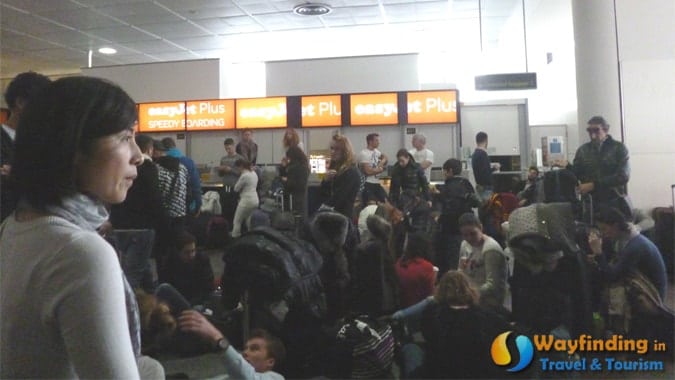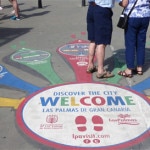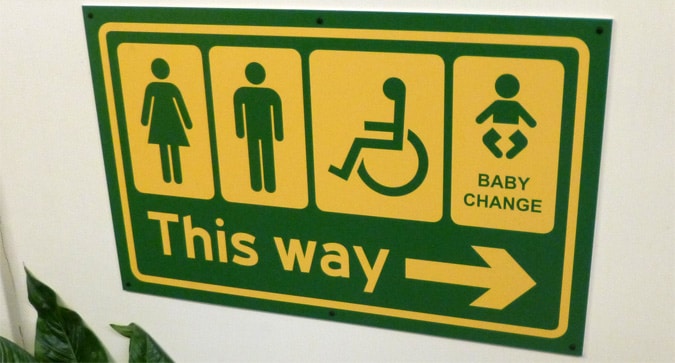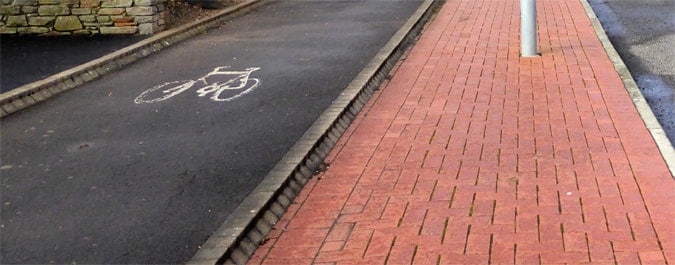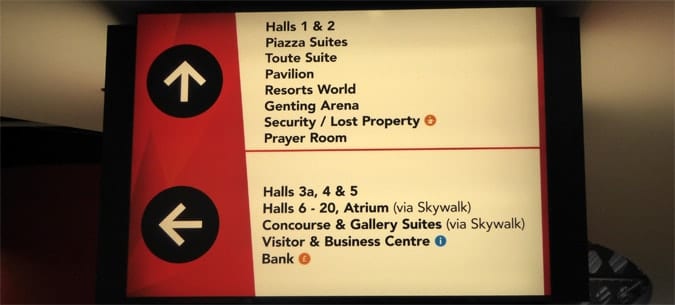Last Updated on October 3, 2023
In this post, let us take a look at airport wayfinding planning and techniques for creating an effective way to guide passengers, employees, and visitors to airports.
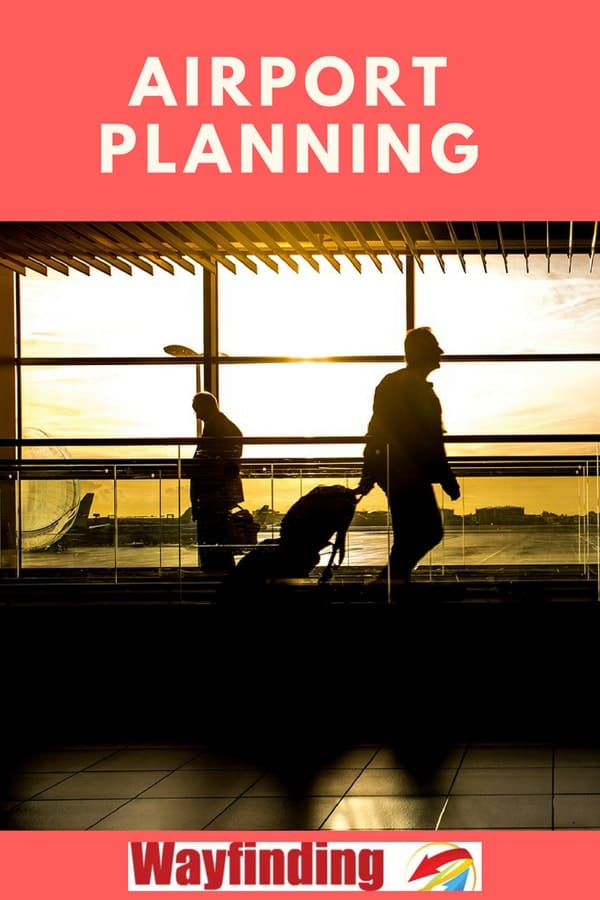
Studies on wayfinding often use airports as a focus of their research and it is easy to see why, when we consider the transient nature of these vast indoor environments; environments which are like real cities, with several thousand people populating these locations at any given time.
Add onto this the fast movements through these spaces, as people arrive to fly to other locations, use the airports for connecting flights and arrive from domestic and international locations abroad.
The airports are also used by transport providers such as limousine services, rail, coach, taxi and courier service providers, in addition to vendors and local workers.
The wayfinding system for an airport is complex, even for small airports. When you start though, to plan for an airport the size of Denver International, Heathrow Airport London, or Haneda airport in Tokyo, the process and system reach another level of complexity.
Add into this the high state of emotion that many travelers are in and we have quite a dynamic location in which an efficient, safe and multi-purpose wayfinding system needs to be planned for.
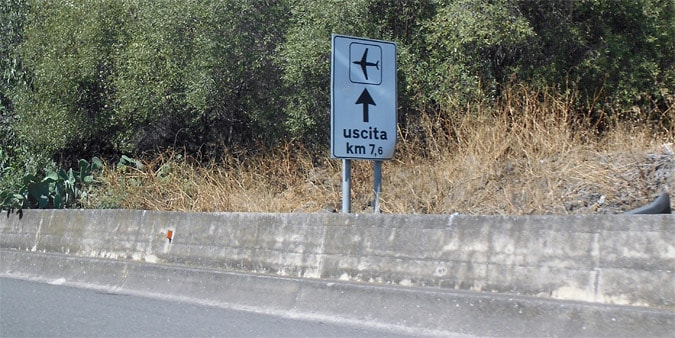
Table of Contents
Arriving at the Airport
It is essential to remember and consider the access to the airport by road and other forms of transport, and the ease of access and ability to find one’s way into the airport and to the airport parking areas.
A traveler’s holiday experience is already underway and getting lost even trying to find the car parking area means that the airport wayfinding system is not properly organized.
Those people arriving to meet friends or family and those arriving to meet and greet (i.e. limousine drivers) need to be able to use the airport effectively, and for the navigation in and out of the airport to be efficient enough.
The wayfinding system needs, in other words, to ensure that not only the inside of the terminals need to be carefully organized and planned, but that the areas surrounding the airport also provide good usability for all those who must navigate to, from, and through the area.
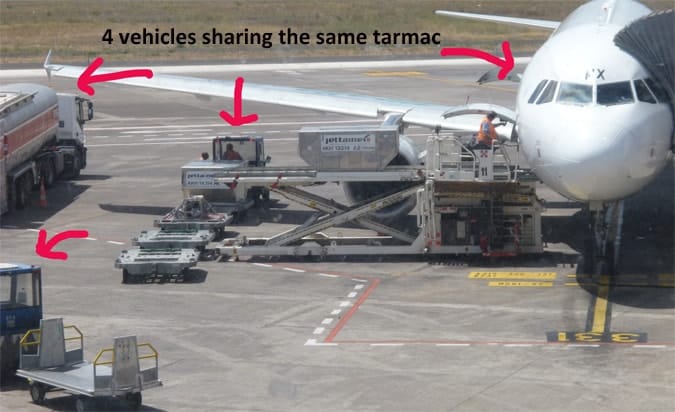
All areas leading up to the airport need to ensure that those arriving for departures, to meet and greet others, delivering stock (such as for vendors in the terminals), and for emergency services, are all carefully planned.
‘Special Assistance‘ provision should also be clear and easy to find, whether with a special desk or telephone assistance point. A good airport will cater to the needs or those who also need help such as wheelchair assistance and mobility help.
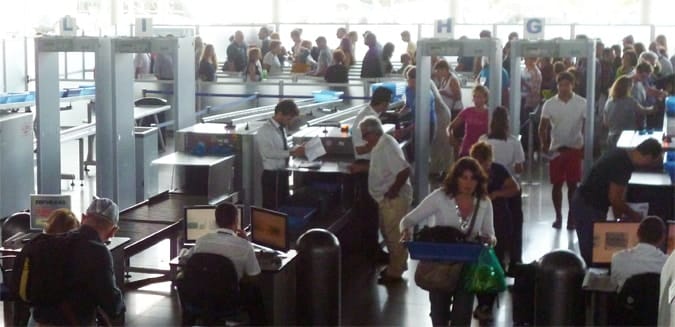
Safety and Security
Most airports tend to offer international flights and this means that the wayfinding system must include very careful planning for security checks and for customs controls.
Navigation through an airport thus involves specific through points i.e. locations that have to be navigated in order for the person to successfully reach the departure gate.
There is a sequential process in a certain respect in airports i.e. you must normally check-in, then navigate through the security checks area, and then you can enter the departures lounge areas, and then you can randomly walk around as time permits.
Within all the chaos of people, things to do, see, and navigate in the airport, there are high levels of organization with tens of thousands of people being moved as hundreds of flights depart and arrive every few hours in large airports.
There is a zonal process that also exists in airports in that certain sections of an airport can be isolated. In terms of wayfinding, this means that there are micro-processes within the overall airport space. The following zonal areas tend to exist in most airports:
- Zone 1 – External areas.
- Zone 2 – Pre-security areas.
- Zone 3 – Post security areas.
- Zone 4 – Post-boarding areas (i..e on the plane on the tarmac, or when you walk across the tarmac to your plane).
There is also the ability now for companies to control your movements in an airport, between areas, using remote technologies.
CCTV and video monitoring companies such as Indigo Vision for example, already from their London-based office, have the ability to stop you from walking back into the baggage claim area if have already walked out into arrivals.
In Delhi Airport (India) and Schipol Airport (Amsterdam, Holland) IndigoVision has this technology in place to monitor and control our movements.
On a recent presentation in a conference sponsored by Indigo Vision, I was able to see how, for example, an automated system can be set up with cameras and detection monitors to automatically close the doors between the baggage area and the arrivals lounge, if a person attempts to walk back through to the baggage area.
The doors immediately close and secure those in the baggage area in that area, until security has evaluated the reason for the person moving in the wrong direction.
Technology, as you can see, is beginning to play a key role in new wayfinding systems and planning and will become ever more important in airport environments.
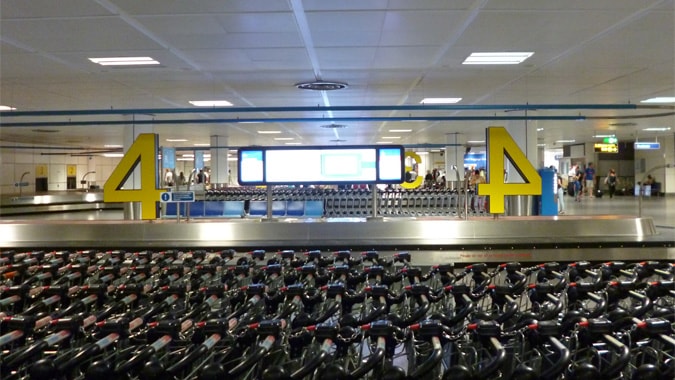
Moving People and Airport Wayfinding Planning
Wayfinding in airports is not only about helping people to get straight from check-in to their departure gate because many travelers will wish for example to use a toilet, to get refreshments, to buy something to read on their flight, or to buy something for family and friends.
Having a clear wayfinding system involves helping those using the space to find their way between a number of locations within an airport.
The zonal areas of an airport though, help airports to manage those visitors to those who use the facility.
Airports have to literally move thousands of people each day, some airports such as Heathrow in fact even have to manage around 200,000 passengers a day, a staggering number of people.
For safety and security, the efficient movement of these people becomes essential.
Airports though, as well as moving people, have to make the process financially worthwhile for their own stakeholders and for the vendors and service providers who rent and use spaces in the airport.
The result of this need to monetize the experience means that we are often intentionally made to take routes and paths that airports have intentionally made longer for us to travel.
One great example is Bristol Airport in England, in which you are forced to navigate through the duty-free area, with perfumes and other sales items forced in front of you, even though you may not wish to look.
Wayfinding as you can see also becomes about the needs of the stakeholders, as much as it is about letting you go from A to B as quickly as possible, and directly as possible.

On the Tarmac
Airports are complex environments and this includes those working in the backstage areas, such as on the tarmac. You might have noticed the top image in which I have highlighted 4 different people with different roles on the tarmac, and each having to navigate along the runway area, each having to perform what one might describe as an airport dance.
By this, I mean that they have to perfectly coordinate their roles and the way in which they navigate the runway area.
Given the cost of the airplanes and also security and safety issues, this choreography of the use of the runway area is essential.
What, to the untrained eye, look like complex and confusing markings on the tarmac, are extremely useful for airport workers (including fuel trucks, baggage handlers etc.) and airlines in knowing the directions and rules in driving in the tarmacked areas.
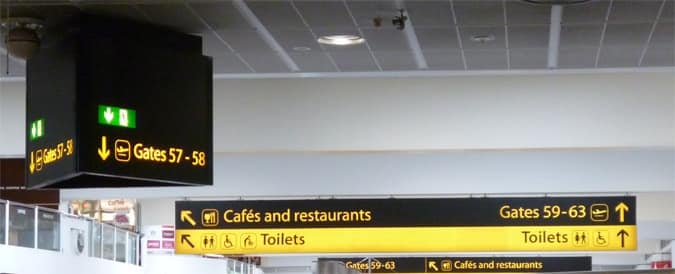
Airport Signage
Airport signage is vital for the smooth running of these mini-cities, but the signs also need to work appropriately with the spaces in which they are placed.
Signage involves very careful planning, implementation, and maintenance. There are several things to consider and this list might be a good starting point for you:
1. Only use signs that are needed. Avoid clutter and clustering of signs.
2. Continuity can be important when making changes i.e. such as when updating your present signage system. (Try to avoid having 5 different companies, for example, providing 5 different designed signage systems as shown in the hospital wayfinding post).
3. Consider carefully signage height and positioning, and the backlighting and letter sizes and font. The signs need to be legible from different distances, from different heights, and to be read by people of different visual abilities.
4. The specific architecture of the given airport will need to be analyzed for natural decision points. Try and get floor plans and 3D models where practical to do so. Analyse carefully the key areas of movement and paths.
5. On the same note, in complex environments, it can be best to create a diagram to evaluate different types of passenger types and their needs. Elderly and mobility-impaired passengers might need the first port of call to be where they get wheelchair help and not check-in. Arrival types vary i.e. train, car, a coach also and so people need to get to different places from different entry points.
6. Airport travel space and how these spaces are used by travelers in respect of wayfinding can be affected by various elements including by time you have, familiarity, and cognitive ability. Consider carefully how these elements might need to be factored into your new wayfinding system.
7. When planning signage, think carefully also about people’s physical and cognitive needs i.e. the elderly, blind, and parents. The staircases might be easy to find and logically placed but how easy or hard is it for those using lifts to find them, to navigate the same spaces?
8. Do not forget to use your website to improve wayfinding within the airport itself. Create printable airport maps for example and make it easy for users to get up-to-date information on the airport by making your social media URLs easy to find. Ensure your site makes it easy for users to find disabled access information, terminal information, parking info, any airport navigation maps.
9. Standardise the color, design, and sizes of your signage for better airport wayfinding planning.
10. One way to work out the location of where signage should be is to plan the airport into decision areas.
11. Rather than signage, the use of space should be enough to make the check-in areas clear when entering the main departure entrance. Using large open spaces, check-in areas should be immediately visible. Placing TV screens with check-in gate information will make it easier also for airports with large or numerous terminals.
12. In airports that act as the hub for a spoke-hub system (whereby one airport acts as a center point for connecting flights) it makes for a time-sensitive and potentially stressful time for travelers and this is a time when wayfinding can greatly impact on the image of an airport and whether to re-use that airport in the future. Alitalia very often uses the main airports in Milan and Rome for connecting travelers between more regional airports in Italy (such as Catania International Airport in Sicily) with London, Amsterdam, and Paris. Emphasis must be given to the connection areas.
13. Wheelchairs and other mobility help should be placed and ready at key points such as close to the start of long walkways.
14. Consider very carefully if you really need to use a regional language in an airport. Using an airport to promote local heritage in terms of language can potentially be counter-productive. Use the language and terminology that best helps those using the facilities, rather than the language which suits local politics.
15. Try and have control and manage the signage that individual airlines use. This will improve the airport wayfinding planning strategy. The issue of conformity in the airport is essential. As an airport, you should have management of the overall signage and wayfinding system.
16. Do not forget that as airlines change (i.e. one airline leaves and another replaces them) the signs also need to change, so there is an element of temporal design needed in the way signage is created.
17. A database should be created to document all signs in the airport, who is responsible for it and any changes made and the date.
20. Ask yourself if there are there any redundant signs that can be removed. Also are any in need of repair or replacement and are their weekly checks on all signs (might seem mundane but with thousands of passengers viewing the signs each day, maintenance is key).
21. Monthly customer feedback. Ask 20 – 30 people once they are in departures about their experiences.
22. Also, feedback monthly from vendors and all stakeholders.
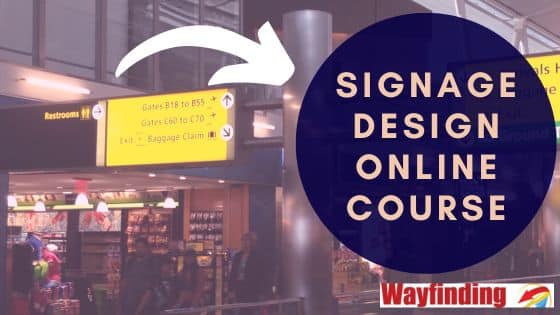
Dr Paul Symonds has a PhD in Wayfinding from Cardiff Metropolitan University in the UK. Paul works with the signage industry, airports and other locations providing wayfinding audits, consultancy and training.


